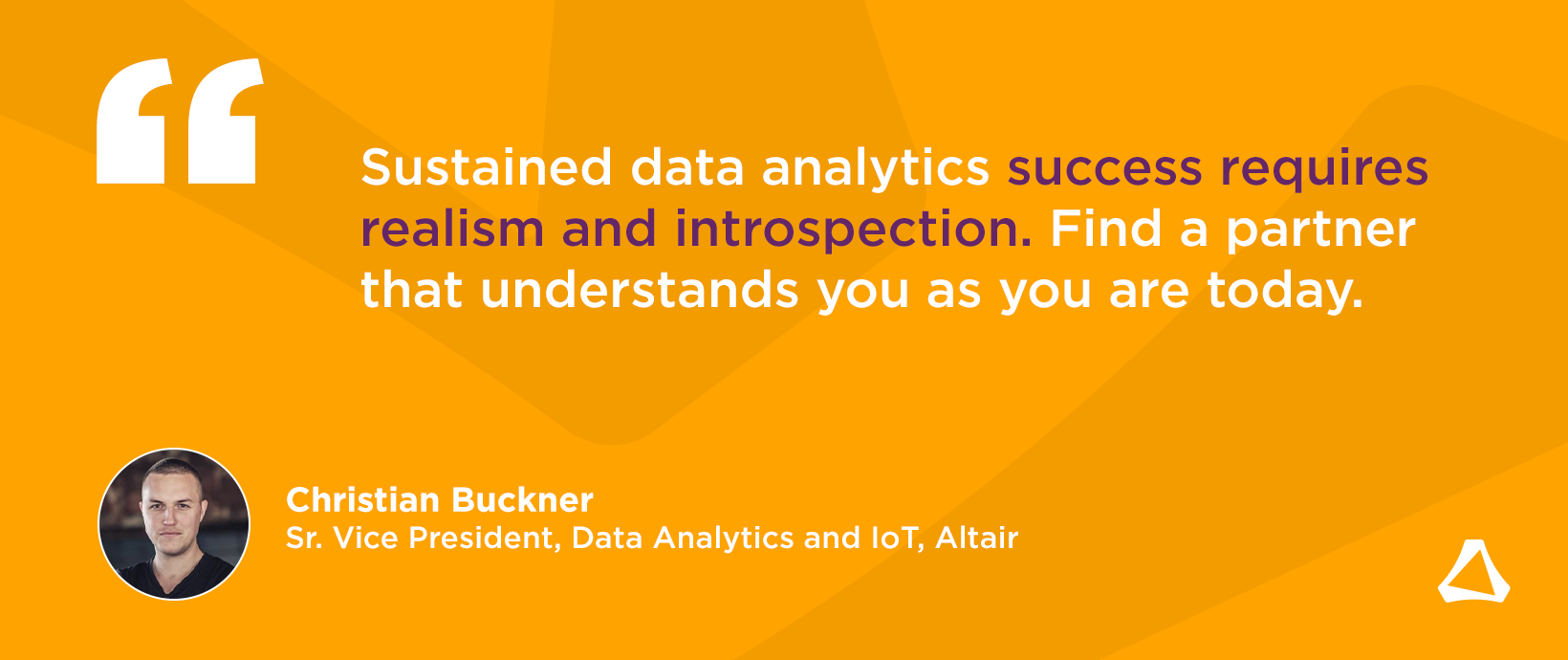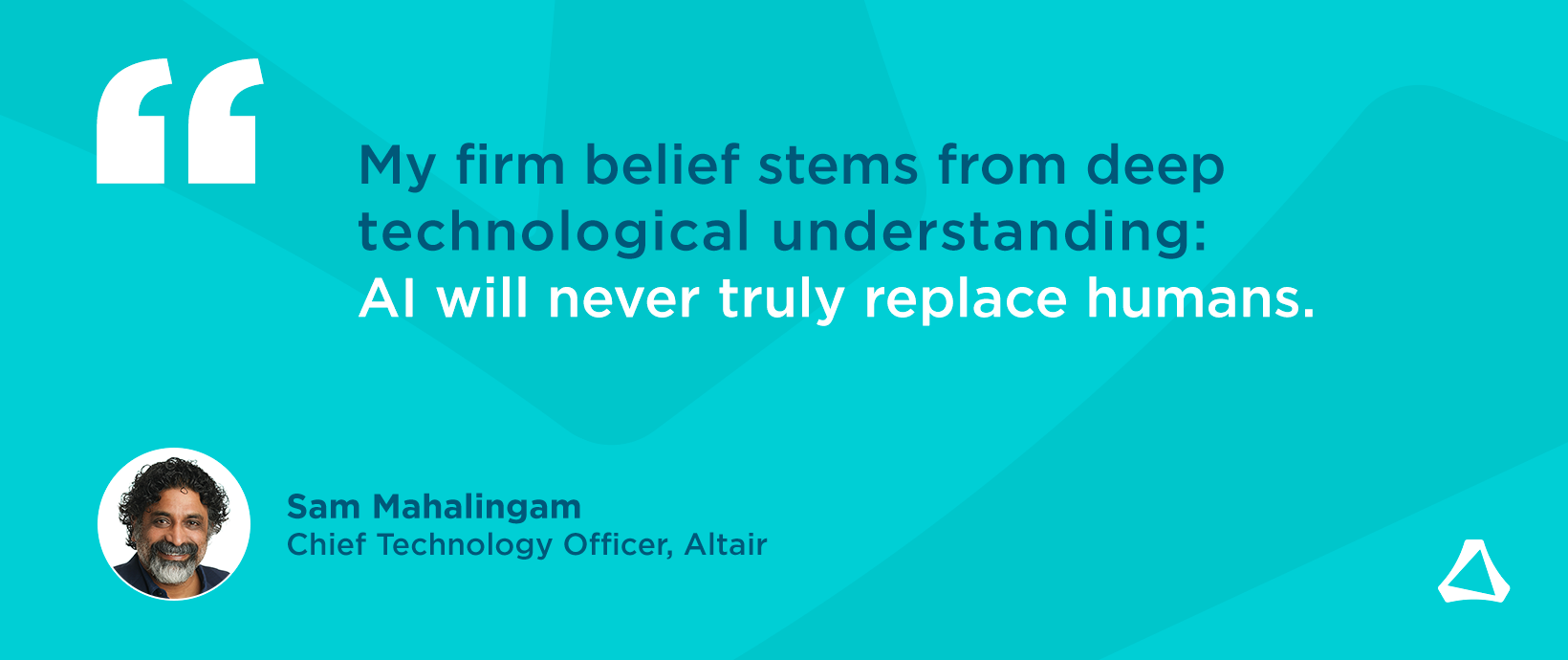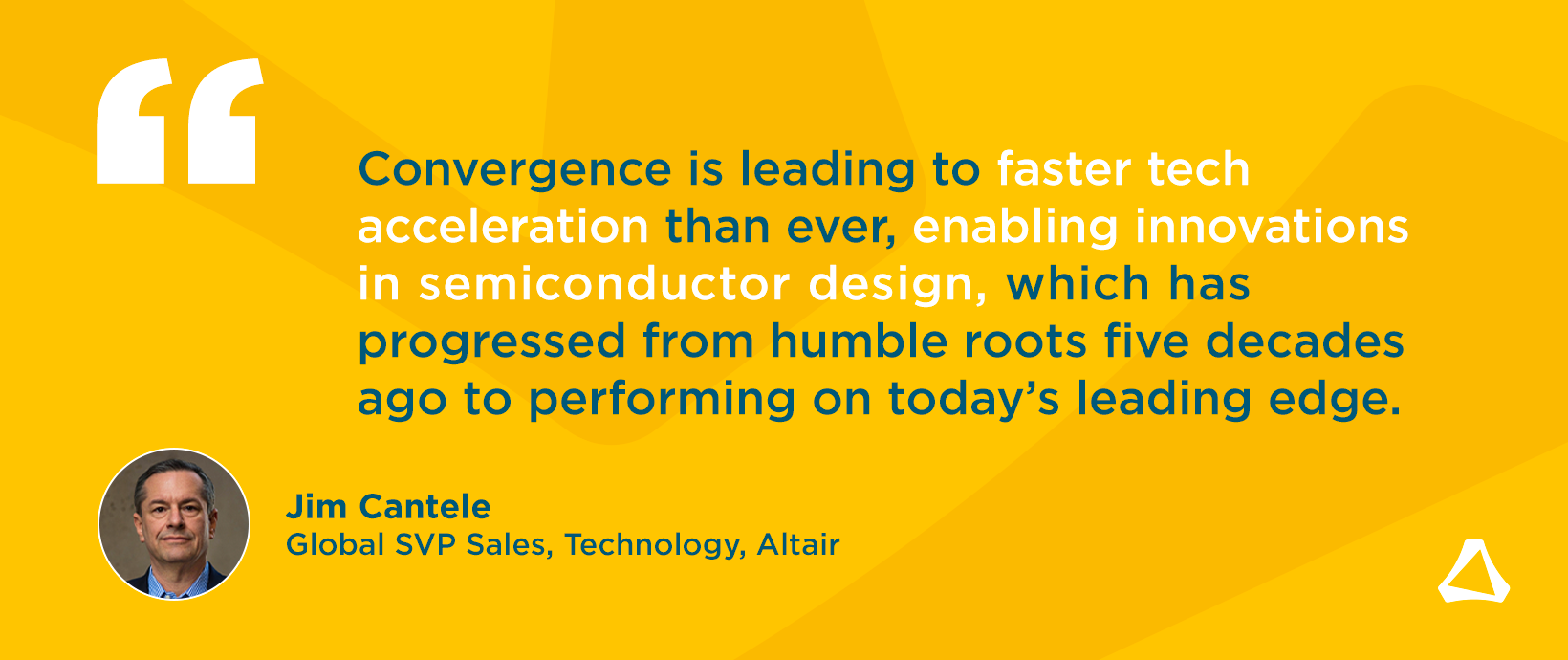Data Analytics Software Vendors are Missing the Point

Data maturity is a spectrum. Some organizations have figured out how to make data central to their business, others don’t know where to start. Few debate the utility of data though – organizations realize the journey is worth taking, some just don’t know the path well enough to get there. But the data analytics technology software market seems to have missed this.
A few weeks ago at the Gartner Data and Analytics Summit, I walked the floor, talked to dozens of data software tool vendors, and listened to passionate presentations on the latest and greatest data technology. The whole time, I couldn’t help but feel a disconnect between the messages shouted through megaphones and the reality of day-to-day data analytics work. The assumption in the market seems to be that everyone needs the same tools – and that it’s critical to adopt those tools this instant. Get on board the revolution or get left behind, everyone seems to say.
Reality is, of course, more nuanced than that. Organizations with established data science teams have different needs than organizations with no data science expertise. Multinational banks that started automating processes with data 30 years ago have different needs than the tool and die maker around the corner that’s running out of space in their file cabinets. Maybe this is obvious to anyone who works with data today, but the pace of “progress” in data analytics technology threatens to leave organizations behind. It isn’t economical, efficient, or smart to uproot your business every five years to conform to the latest data analytics trends. Remember when Hadoop and Big Data seemingly were the answer for everyone? Now everyone’s shouting “big data is dead.” Probably neither are right – more likely big data works for some but not all.
The question is, what works for you? Sustained data analytics technology success requires realism and introspection. See the problem behind the problem. Address the highest value, lowest cost projects first. Set realistic goals and watch your budget. Find a partner that understands you as you are today and can show you the smoothest path to where you’re trying to go. In the end, software tools are an important accelerator toward the goal, but they should never be the goal itself. While sometimes the impulse is to revolt and burn everything to the ground, completely rebuilding is much more expensive and time-consuming than repurposing and adapting. In other words: If it ain’t broke, don’t fix it.
Your Team May Already Know How to Leverage Data – We Get It
For organizations whose data strategy is mature but evolving, the ideal path is usually modernization rather than transformation. These organizations don’t need to be told how to be “data-driven.” Sometimes, they have hundreds of thousands of automation scripts in production already, often written in the SAS language. They may already have streaming data piped to business desks in real time. They may already have mainframes processing millions or even billions of transactions every day. They may already have data science teams with a backlog of projects to complete. For these organizations, it took decades of careful iteration to achieve today’s level of maturity – the result is a trusted business machine.
These organizations will be most successful when they evolve this heritage, not abandon it. Maybe you should move workloads to the cloud, but that doesn’t mean you have to abandon that reliable on-prem infrastructure. Maybe it makes sense to convert your SAS language programs to Python, maybe it doesn’t. Or, maybe the problem is more the partner than the language.
In any case, Altair will be right there with you. We provide a complete toolset for running, writing, maintaining, and expanding SAS language data analytics ecosystems. We also provide the tools necessary to modernize to open-source, Python-based tools at an economical and non-disruptive rate. Our data analytics operationalization tools help mature data science teams monitor workloads, and then iterate and improve them safely. We have a collaborative enterprise artificial intelligence (AI) platform that expands the pool of people who can work effectively with data and short-circuits the back-and-forth between business teams and data teams.
Additionally, we support diverse infrastructure landscapes – from mainframes to cloud – which helps you bridge your current investments with your vision for the future. We see the heritage, understand the team, and work within the established environment. Then, once organizations realize short-term wins, we provide the tools needed to modernize quickly, efficiently, and safely.
Or Your Team Might Just Be Starting Out – We Get That Too
For organizations whose data strategy is just starting to emerge, the best path usually starts with upskilling the team, automating what can be automated, and finding smart ways to use data in decision-making. It’s about giving diverse, non-traditional teams the right tool at the right time to cut through technical and organizational barriers, distill the truth, and put it to use. In general, it’s about finding the right places to save time and money to maximize impact.
Put more simply, these teams need to learn how to make data their superpower. At Altair, we do this by bringing data science and data analytics technology to anyone who has the motivation to learn it. We provide code-free, point-and-click tools that simplify the sometimes daunting aspects of data analytics technology and make them approachable. We help you find your data, make it look how you want, interpret or forecast using machine learning, and put everything in an app – all without users needing to write a line of code or get a doctorate in data science.
And while all of this will take significant growth, Altair’s Center of Excellence approach and the Altair RapidMiner platform make that growth a targeted, systematic evolution – rather than a disruptive revolution – by empowering the team you have today and giving them the tools to succeed going forward.
A Word on ChatGPT and Data Analytics Technology
Maybe the best example of a data analytics technology with a big megaphone but a disconnect with day-to-day data analytics reality is ChatGPT. ChatGPT and large language models (LLMs) are all the rage right now, and for good reason – they’re incredible data analytics technologies that will change how we interface with computers in the next few years. Chat interfaces will replace or extend many of the “point-and-click” interfaces we’ve grown used to since the beginning of software. ChatGPT and LLMs will drastically accelerate – and maybe even eliminate – jobs centered around text and writing.
But ChatGPT isn’t a panacea. It lies, it’s bad with numbers, and inherently, it’s not private. Many organizations won’t be comfortable with these issues and, as a result, specialized large language models will need to take ChatGPT’s place for many things. In data analytics, these will be specialized for analytics, math, and reliability.
The point is: it would be short-sighted to ignore ChatGPT’s benefits, just like it would be short-sighted to ignore the benefits of other advancements in data analytics technology. But at the same time, those benefits shouldn’t come with such high cost, high risk, or broad disruption. You should be able to walk the path without the hardship – the trick is to find a partner that can both find the path and avoid the hardship. At Altair, that’s what we aim to do.
If you’re interested in learning more about Altair’s approach and tools, here are some additional resources:
- Altair's vision for Frictionless AI
- Altair RapidMiner, the last data analytics technology platform you’ll ever need
- The Center of Excellence methodology that gives your team data superpowers
- Altair Units. The best way to access software. All in. Always on.




